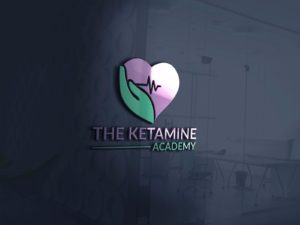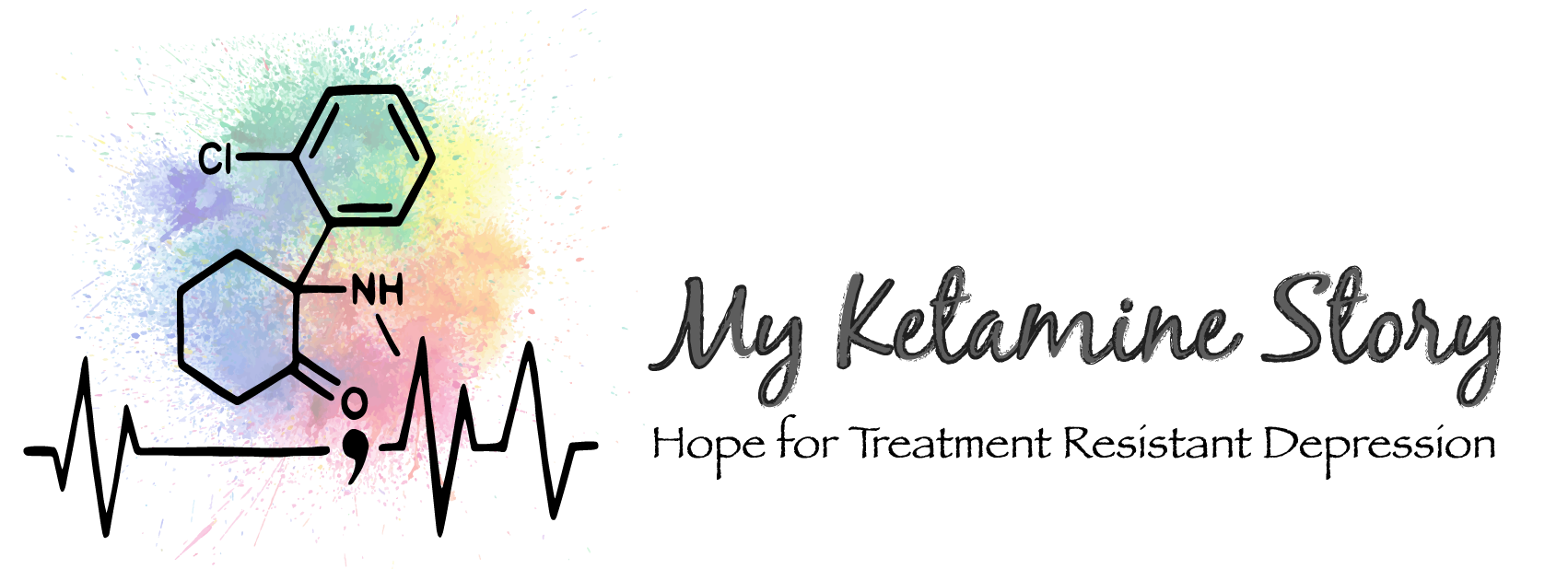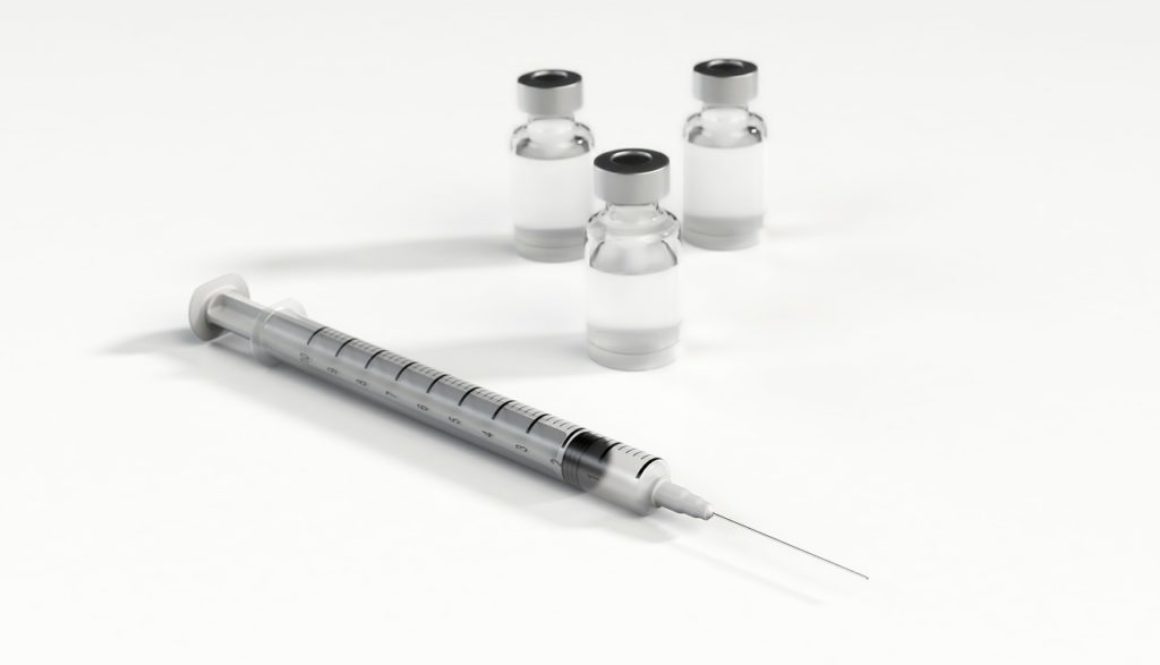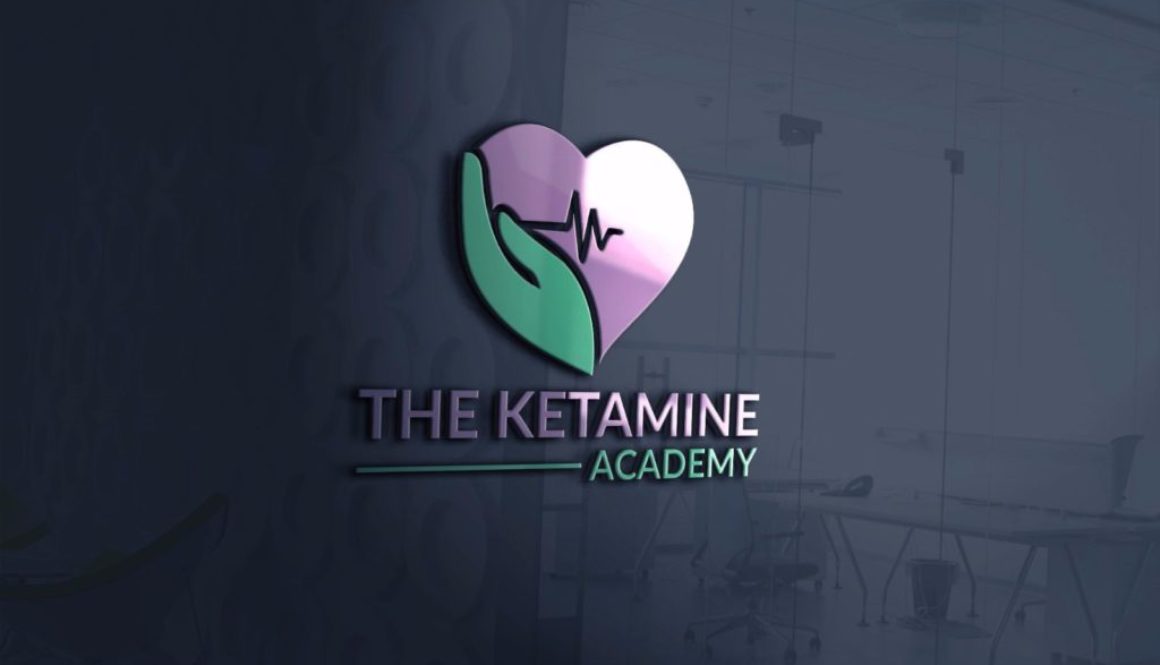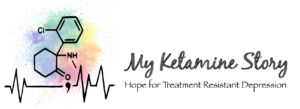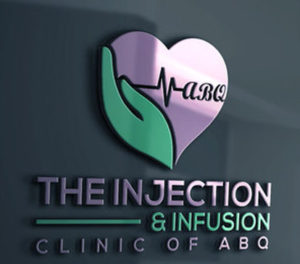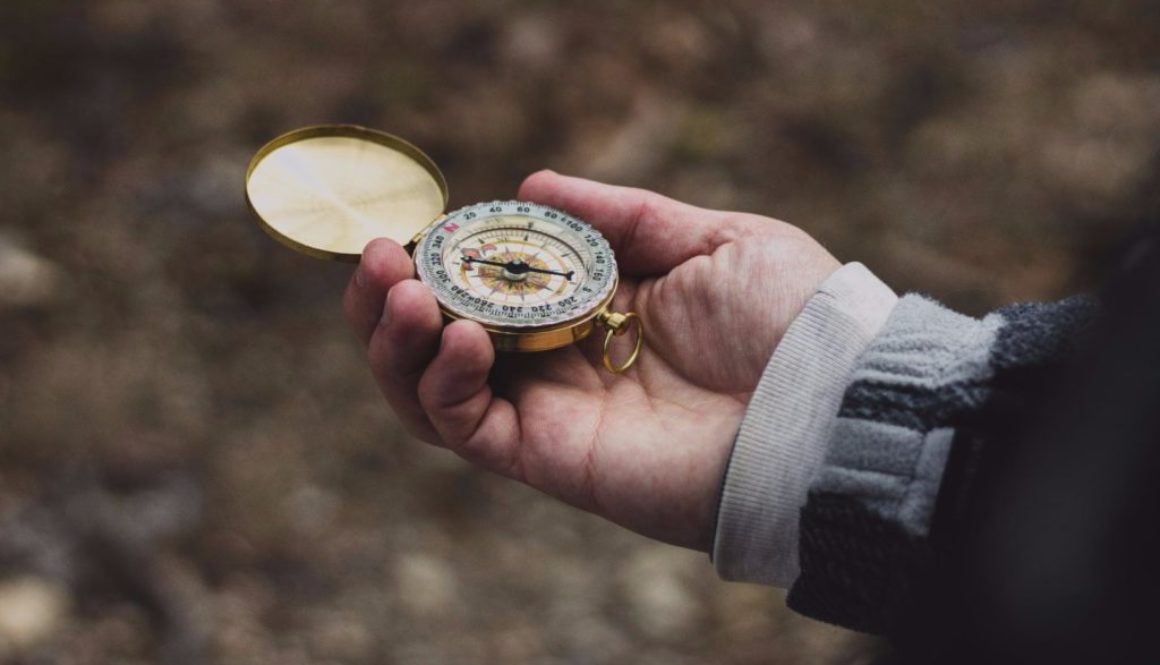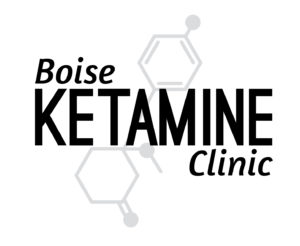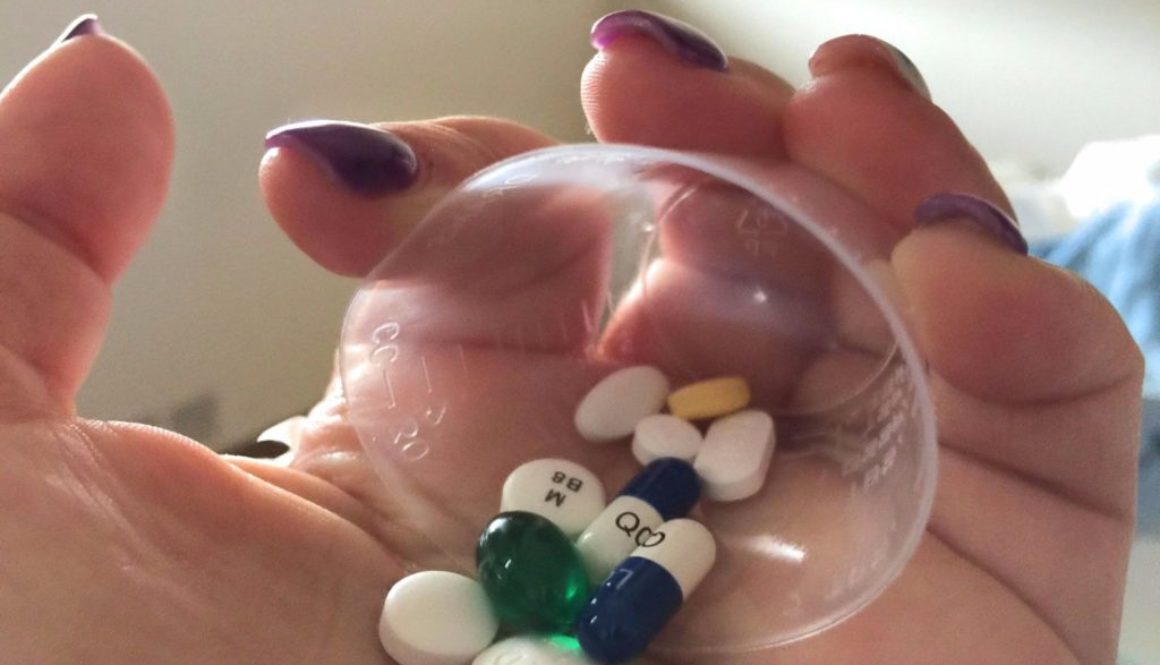Ketamine Therapy: When Getting Intramuscular Ketamine Injections Does The Size Of The Needle Matter?
Hello again. It is Susan from myketaminestory.com.
I am a blogger that suffers with Treatment Resistant Depression (TRD), Anxiety, and Obsessive Compulsive Disorder (OCD). I was introduced to Ketamine for TRD in January 2015. I am forever grateful that I was. I spent the first two years focused on my recovery. I now have an excellent treatment plan in place, but that does not clear me from obstacles or pitfalls. I journal regularly. I educate and advocate for Ketamine Therapy to help treat chronic depression.
I have written for several Ketamine websites, entirely based on my experience with Ketamine therapy over the past 3.5 plus years in treatment. I am now adding the Ketamine Academy to my list of platforms I am grateful to use, in order to educate and advocate for this cutting edge therapy for resistant depression.
In this blog, I want to discuss whether the size of the needle used when getting intramuscular Ketamine injections makes any kind of difference on the Ketamine session and the effectiveness of Ketamine therapy overall. The reason I bring this up as a topic is because recently my doctor switched the syringe he was using when administering my Ketamine, and I have a few promising insights.
Initially, my doctor was using a 1cc tuberculin syringe with a fairly long needle, and the effects following the injection were often extremely unpredictable for me. The Ketamine would allow me to be symptom free for an upwards of two weeks, but while the Ketamine was in my system I had mild to severe differences in effect during my forty-five to sixty minute appointment.
The experiences I had following my injection could range anywhere from an intoxicating feeling, as though I had just slammed a couple of tequila shots, to a more profound dissociative effect. What I mean by that is, I often perceived my thoughts and feelings outside of my body. The best way to explain this is to say it was like watching a movie, but sensing the thoughts, reactions, and actions of the actor. That actor was me.
It was bizarre. It was intriguing. It was not at all scary for me. In fact, in the three years and nine months that I have been receiving Ketamine therapy, I have only had one horrible experience. I can now reflect back on that incident and know the reason behind it. I can honestly admit that I don’t necessarily handle change very well, and various situations were causing me a tremendous amount of stress prior to that unpleasant treatment. I will say that even after that event I still benefited from the Ketamine injection, and my depressive symptoms were lifted. That is the ultimate goal.
If I noticed that I was becoming overwhelmed by the scene, I was capable of reminding myself that “this sensation will end shortly” and that “I am in a safe place.” I frequently closed my eyes during treatments as there was a lot going on for me. In fact, I was not always aware that my eyes were closed because the pictures I would view were very much alive. I would feel as though my eyes were wide open due to the vividness of the images and colors. Yet, in most of my appointments, I am able to carry on a conversation of sorts.
I continuously try to use the Ketamine to my advantage by engaging in psychotherapy with my doctor. Ketamine offers me clarity. It is as though I am speaking freely from my unconscious state of mind. A type of free association, which in turns brings about some astute facts about myself.
I can remember many times being obsessed with time. I would routinely ask my doctor how many minutes have passed since the injection. It became a theme in my appointments, and I laugh about it now. It gave me comfort knowing how much time had passed and what remained.
It was interesting; each and every Ketamine therapy appointment was never quite the same. I would learn so much during these sessions about myself. I still do. I had, and repeatedly have, some intense and incredible insights that aid me wholeheartedly in my self awareness and healing.
I found it pleasant much of the time. I used that time under Ketamine to learn more about myself in order to grow and learn to live a more positive and productive life. These discoveries were not always ones I was ready to learn about myself; sometimes the truth hurts.
As I said, Ketamine offers clarity.
However, it was very inconsistent in terms of what was going to happen at any given appointment, and that would generally be unsettling for me. I wouldn’t necessarily be in a state of panic per se, but curious with an underlying level of anxiety. I am a control freak, and I have an insatiable need to predict what is going to happen to me at any given moment. I have recently learned that it is this drive to forecast my life that hinders me from actually living it.
I typically want to participate in psychotherapy during my treatments, but this wasn’t always possible. I would customarily share what I was experiencing during my session with my doctor. Yet, I wanted to also work on life skills and coping, which wasn’t routinely an option for me when I was undergoing my Ketamine therapy.
During several of my Ketamine treatments it was as though I was swimming in colors and involved in a variety of themes. I felt weighed down and cloudy. I would get caught up in what I was seeing and feeling. Yet, at the same time, very aware of my emotions and consciousness. The stories seemed to be happening outside of my inner world or the environment I was in, such as my doctor’s office or the chair I was sitting in.
It is difficult to explain adequately.
When I am asked how Ketamine infusions and intramuscular injections differ I never know how to answer. There have been instances where my Ketamine therapy was exactly the same in terms of having that “trippy” sensation occur. I have had infusions where very little happened besides feelings of calm and a sense of contentment. The sense that all was right in my world and mind. This has been my experience with Ketamine injections, too. It is quite unknown to me what will take place during my treatments.
One thing that generally happened and continues to be my outcome is a lifting in my depressive symptoms. This is my primarily reason for getting Ketamine therapy and whatever happens during a Ketamine appointment is secondary.
Fast forward to three and half years later.
I return from a twenty-eight day treatment center feeling optimistic. I am home for roughly five weeks before having to think about resuming my Ketamine therapy. I find the depressive symptoms returning and dictating my life; my mental illness needs attention once again. In all truthfulness, it was something I was hoping to escape from permanently with the use of all the new tools and therapies at my disposal.
That would not be the case for me.
I have a disease that needs treatment.
I am still working on acceptance.
I decided to continue seeing my doctor for cognitive behavior therapy sessions following my recovery program, and things are going remarkably well for me.
The depression always resurfaces. It just does.
My doctor and I discuss my resistance to accepting my illnesses. I fight against giving up control, but what I have discovered is letting go of old ideas brings peace and freedom. My depression wants to keep me locked in a dark place, but I know the solution and have a medication that relieves me of my depressive symptoms.
It is okay.
My doctor informs me, Ketamine is just your antidepressant – and I listen.
I concede.
My doctor then suggested to me that we change the needle size we are using to administer my Ketamine. I asked him why he wants to change the syringe he is using and I will admit I felt apprehensive. He knows me well and educates me. In my mind, knowledge is power and I adjust more readily when I have the reasons behind any type of change. I am more willing. I hear him out. I listen when he explains to me that he wants to use a BD 1cc U100 insulin syringe instead of our standard tuberculin syringe, and why. It is his belief that by using a shorter needle he will have a more consistent and controlled delivery of the Ketamine.
I trust him.
He wants me to take note of any observations I have using the new insulin needle. I have no problem providing him with an honest assessment, as I have been a wealth of information to him and we work fantastic together. The use of Ketamine is incredibly new and it is crucial to document the changes we make and my outcomes. My sharing is vital to my recovery. It is another reason why I write on the subject on Ketamine. I want to educate and allow others to benefit from my experiences.
It has been over two months now that we have been using the new syringe, and I have noticed a huge change in what I experience while in his office. Needless to say, I want to elaborate on what I mean exactly.
As I have stated previously, the major complaint I had about Ketamine therapy was the inconsistencies during the treatment itself. I rarely knew what I was going to experience during my office visit. This unknown factor frequently produced, for me, low levels of anxiety. I enjoy learning about myself. I set goals for myself. I strive to get better and understand how I might be able to cope with my place in the world. I typically enter my doctor’s office with a topic to discuss or an event I need to sort through so I may move past it.
I classify myself as a type A personality.
I like to use my time with my doctor to my advantage. If I am getting my Ketamine treatment I also want to use the time to talk about my last couple weeks and the struggles I may have encountered in order to learn from them and hopefully find new methods to manage and better maneuver through similar obstacles in the future. Or perhaps, discover why I may have reacted the way I did in the first place. I long for a deep understanding of self. I want to change my story going forward. I refuse to stay stuck in unhealthy management skills.
I seek recovery.
I don’t want to write of nightmares and tragedies.
I want to offer hope.
I want to engulf myself in serenity. I need that after decades of not believing that was even a possibility for me. I was convinced, 100%, that my story would end in suicide. It almost was my outcome. There wasn’t a treatment, medication, or procedure that ever offered me the hope I have received from Ketamine therapy.
I digress.
In the past, I would have feelings of apprehension when entering my doctor’s office for my Ketamine injection. I would have an agenda, a goal, or a frustration I was experiencing, but I never fully trusted that I would be able to converse or that I would be given the opportunity to speak my ideas or concerns. The Ketamine would dictate the direction the session would take.
Over the last several appointments one thing has become blatantly obvious to me: the size of the needle does in fact make a difference for me. It is worthy of this rumination of sorts.
The biggest observation I have made over the last couple of months is I no longer find myself closing my eyes. I don’t need to. My outer world is stable and not altered in any way. I am aware of my surroundings. I don’t feel remotely overwhelmed by the visuals or colors. I am impressively capable of discussing my agenda.
I can work on me. I can now participate regularly in cognitive behavioral therapy and discuss mindfulness techniques I can utilize in the coming weeks.
I don’t sink into that heavy pool of water and heaviness. I am no longer swimming, constantly fighting, to reach the surface so that I may discuss my life instead of what I am experiencing with the Ketamine.
I can work my recovery.
I can delve into my experiences living life.
I don’t lose track of the conversation because my mind wanders and follows another theme set by the Ketamine. I am no longer explaining what I see and what I am encountering.
I am present.
I can consistently stay on topic and I am open to hearing feedback.
It was just this past week, on my way to get Ketamine, that I remarked to my husband that it was a blessing that I didn’t feel any concerns about what I would experience during my Ketamine treatment. I didn’t have to worry about whether I would feel nauseous. I didn’t have to stew or wonder if I would be able to ask a relevant question that could aid me in coping with the coming weeks as I knew I would get the opportunity to question my doctor. I didn’t have to obsess over time. I no longer needed to have my husband remind me of the things I wanted to share.
I feel a sense of freedom from the experience I once had while under the influence of Ketamine.
The remarkable thing is I am even more attuned to the shift that takes place when I am getting my Ketamine.
It is fascinating to me.
I can walk into my doctor’s office feeling intense depression and negativity about myself and life in general, and within a short time I get relief.
I will be worked up and explaining to my doctor how I am struggling with motivation and dark thoughts and begin to question myself as to whether those statements and feelings are true. I no longer feel those familiar resentments and despair I get when the depression returns.
I begin to use contradictory statements. I hear myself. I listen to my intuition.
I no longer have that fight to convince my doctor just how bad I am feeling. I want to continue on and express how horrible the past day or two have been for me. It is then that I notice a swing in my thoughts. I am saying words that just don’t feel real or accurate. The Ketamine works its “magic” and I feel slightly more optimistic. I can recognize this change in my thinking and will make note of it to my doctor.
I start using past tense in my conversation.
I feel becomes I felt.
I didn’t want to get out of bed flips to maybe I just needed to recharge after a stressful week.
It still puzzles me how Ketamine works.
But it does work.
I feel uplifted. I begin to genuinely see how ridiculous my thoughts were.
I pause. It has been less than twenty minutes. I feel like I am back.
The upsetting darkness I walked into my appointment with has faded away.
I am clear minded and hopeful.
What is even more impressive is I no longer have to dive into the abyss, feel that sense of disassociation from my body and mind, or that intense drunkenness I encountered during almost every treatment.
I truly believe that it is because we changed the syringe I was using to get the Ketamine injection that my experience of the Ketamine therapy has changed. My doctor now has a more consistent and controlled method of ensuring that the complete dose of Ketamine is entering the muscle and not the bloodstream.
I have now had six very similar experiences, using the insulin needle to deliver the Ketamine. All of these injections have had very little effects of the drug, or have had a really mild feeling of being under the influence of a medication. I will take it.
I now know what to expect during my Ketamine treatment and that is a consistent shift from the horrors of depression to a more buoyant mood.
What a true gift Ketamine has been for me; clarity and hope. Add to that positive statement the fact that by using a BD 1cc U100 insulin syringe, the Ketamine effects I was once experiencing are tailored down tremendously. It has me convinced that the size of the needle for Ketamine injections is vital. It definitely helps to ensure a method of controlled delivery, as well as, minimizes the side effects during the treatment appointment itself.
I hope you will join me in learning more about Ketamine, by reading my blog posts and sharing with friends and family. I will be posting regularly on The Ketamine Academy website, as well as, on my personal website at MyKetamineStory.com. I know what a miraculous drug Ketamine is. I am absolutely confident that I have lived 3.5 plus years (and counting) longer than I would have if my husband had never discovered an article in 2015, about using Ketamine for treatment resistant depression. I continue to heal and grow with the help of Ketamine.
We all need a platform to stand on and be heard. I truly believe Ketamine is a worthy topic. I sincerely want to inform as many people as I can. It is possible that we may all know someone suffering from Treatment Resistant Depression (TRD) or Post-Traumatic Stress Disorder (PTSD). I believe they might benefit from Ketamine Infusions. I know that I definitely have had, and continue to have, amazing success with Ketamine treatments. I know how frantic I have felt when I had no hope, no light guiding my way. If one person reads this blog and can help themselves or someone they love out of darkness, it is worth the time I put into my writing. I know from experience how life- altering Ketamine can be.
I have treatment resistant depression and anxiety disorder, but that isn’t who I am. My blog is my journey. The articles I write are lessons I have learned along the way. I pray that others suffering will somehow find their way to my website so I can introduce them to the possibilities of Ketamine. I ask a power greater than myself to bring as many practitioners, fighting for their patients and wanting to participate in positive change, to read my words of hope.
Until next time, feel free to comment or shoot me an email. Better yet, if you are a healthcare provider, why not sign up for the Ketamine training course today through The Ketamine Academy. Be a force of positive change. Be an option. Be a place for those suffering with Treatment Resistant Depression or Post Traumatic Stress Disorder to turn when all other avenues have been exhausted.
Ketamine is hope.
If you are interested in educating yourself further on Ketamine therapy for Treatment Resistant Depression, check out the four-part series I wrote answering questions about Ketamine use, based on my experience with Ketamine therapy over the past 3.5 plus years:
My first blog, Ketamine: Addressing Questions & Concerns focused on my early experience with Ketamine Infusions.
In part two of the series, Addressing Questions & Concerns About Ketamine Therapy for Treatment Resistant Depression I addressed questions and concerns about Intramuscular Ketamine vs Ketamine Infusion therapy.
In my third blog, Frequently Asked Questions: Redefining Depression With The Assistance Of Ketamine Therapy, I was a bit more random. I had emails with several questions and themes, and I addressed as many inquiries as I could.
In my final question and answer dialogue, Pondering Concerns & Questions: The Benefits Of Ketamine For Treatment Resistant Depression, I discussed research, clinical studies, and the need for changes to occur within our insurance companies and federal government so that maybe one day Ketamine will not be so difficult to afford or obtain, from any qualified professional.
I hope these personal blogs from a patient that suffered for over four decades with treatment resistant depression will be helpful in convincing you why Ketamine could help you or someone you love.
Originally posted on The Ketamine Academy website
